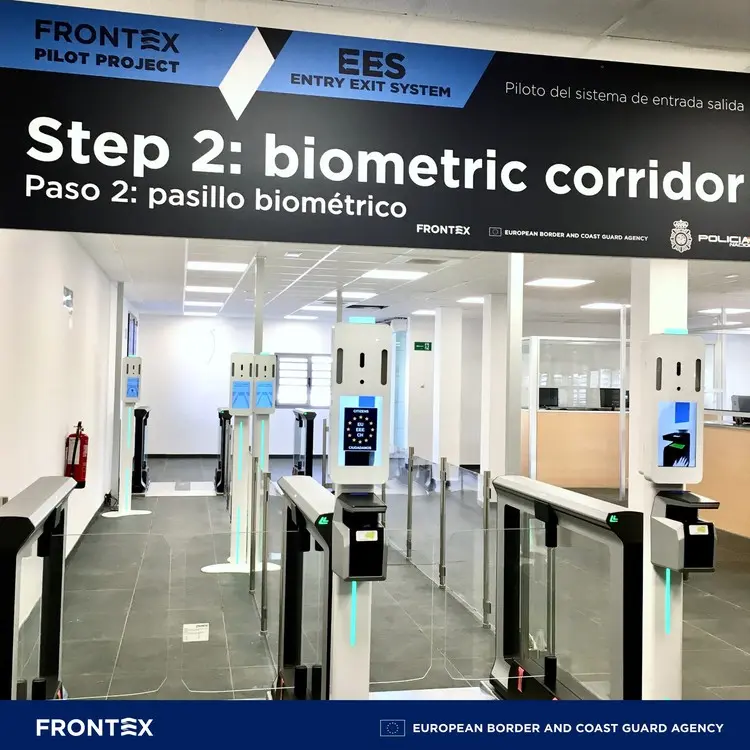Launching October 2025
Planning a trip to Paris (or anywhere in the EU) just got a bit more technical—but don’t worry, it’s nothing you can’t handle with a little savoir-faire. The Entry/Exit System (EES) is a new European Union regulation designed to digitize and streamline how non-EU travelers enter and exit the Schengen Area.
For travelers from countries like the U.S., U.K., Canada, and Australia, this means some changes in how your passport is processed. No more simple stamp in and out—instead, a biometric record is created and logged each time you arrive or depart. While it may sound complicated, the system is designed to improve security and reduce illegal overstays. And with a few smart tips, you’ll breeze right through.
What is EES?

It replaces passport stamping.
Your passport will no longer be physically stamped when entering or exiting the Schengen Area. Instead, your entry and exit will be digitally recorded, including biometric data (facial scans and fingerprints).
It applies to non-EU nationals.
Anyone from outside the European Union or Schengen Zone—including Americans and Brits—will go through the EES if visiting for short stays (under 90 days in a 180-day period).
It’s part of a larger digital transition.
The EES is separate from—but often mentioned alongside—the upcoming ETIAS visa waiver, which is expected to launch soon. While ETIAS requires pre-registration and a small fee, EES happens at the border automatically.

Be In The Know
Paris is always worth the paperwork. And while digital border systems like EES may feel unfamiliar at first, they’re manageable with the right preparation, and maybe a touch of Parisian poise.
If you’re planning your trip soon, staying informed means less stress and more time to sip that chocolat chaud by the Seine.

A few tips:
6 Tips for Navigating the EES with Ease
Know your passport history.
Because stamps are going away, you won’t have a visual record of your previous trips. Keep your own digital log of travel dates to avoid overstaying your 90-day limit.
Expect biometric checks.
Upon entry, you’ll likely need to scan your face and/or fingerprints at a kiosk or with a border agent. It’s quick, but allow a little extra time—especially at major airports like CDG.
Have your travel plans handy.
Be ready to explain your purpose of visit, length of stay, and where you’ll be staying. This isn’t new, but under EES, border agents may ask more frequently to ensure compliance.
Leave extra time during high-traffic periods.
As the system is rolled out, delays are possible. Arrive early and be patient during the initial months, particularly at Paris entry points.
Understand the 90/180 rule.
The EES enforces this strictly: you can only stay in the Schengen Zone for 90 days within any 180-day period. L’Atelier includes tools to help you track this easily.
Don’t confuse EES with ETIAS.
EES is automatic and tied to your passport; ETIAS is an online application that will be required before travel (similar to the U.S. ESTA). You’ll need both once ETIAS is active—but for now, it’s just EES at the border.
Plan Your Trip with Confidence in L’Atelier
L’Atelier is more than a travel guide—it’s your Paris planning headquarters. Inside, you’ll find:
- Personalized planning tools and templates
- Up-to-date travel rules, tips, and checklists
- Curated resources for smooth arrivals, itineraries, and beyond
- A members-only community for real-time support
- Bonus content for your Paris Persona and planning style
Whether you're preparing for your first trip or returning to your favorite arrondissement, L’Atelier helps you feel confident, organized, and inspired from daydream to departure.
👉 Join L’Atelier today and plan your Paris trip the elegant, effortless way.